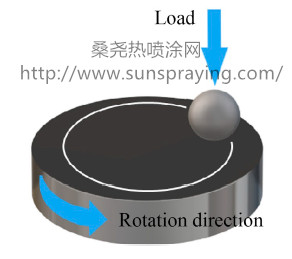Amorphous carbon coatings have been widely used in aerospace, microelectronic systems, and other fields owing to their excellent mechanical and tribological properties. Carbon is present in the amorphous carbon coatings mainly in the hybridised sp2 or sp3 form. The presence of diamond-like or graphite-like structures depends on the sp2/sp3 ratio. DLC coatings contain more sp3-bonded carbon, which has a higher hardness and elastic modulus, resulting in excellent tribological behaviour. Therefore, they can be widely applied in cutting tools, bearings, automobiles, and other applications. GLC coatings contain more sp2-bonded carbon, which results in a self-lubrication effect and high antiwear properties in several applications. They can be used as the working surface for moving parts used in seawater environments. Li et al. investigated the load-carrying capacities of DLC, GLC, and CrN coatings under sliding friction in different environments and found that the load-carrying capacity was closely related to the surface roughness, coating thickness, and mechanical properties. Aboua et al. studied the friction and wear properties of DLC coatings under boundary lubrication conditions; the results indicated that carbon diffusion was an important parameter affecting the tribological behaviour of hydrogenated amorphous carbon coatings under boundary lubrication. Fan et al. showed that friction-induced graphitisation at the sliding interface was the key condition for obtaining excellent tribological behaviour of Cr-DLC-grease lubricant coatings. Therefore, the tribological behaviour of carbon coatings is affected by many factors, in particular the structure of the carbon coating, so it is useful to study the tribological properties of carbon coatings with various sp2/sp3 ratios to further understand the wear mechanism. Solid lubricants exhibit good antifriction and wear resistance properties. However, long-term stable maintenance of these properties is difficult when the lubricants are subjected to vacuum or heavy loads. Conversely, liquid lubricants can easily reduce the wear loss, but their volatility and strong environmental dependence limit their application. Consequently, traditional single solid or liquid lubricants cannot effectively tolerate the harsh environment of modern equipment. Solid-liquid composite lubrication systems composed of solid coatings and a fluid can effectively combine the advantages and minimise the shortcomings of each component, resulting in a synergistic effect; thus, they have ions and cations; they are polar and have high thermal stability and low sensitivity to environmental changes compared to traditional lubricants. Previous research on the effect of the chain length of the cation, temperature, and lubrication properties on the tribological behaviour has yielded valuable information. Feng et al. studied the tribological properties of Ti-DLC coatings under ILs or perfluoropolyether (PFPE) in a composite lubrication system. The composite system exhibited excellent antifriction performance when the ILs were used, and the friction coefficient was reduced by 47% compared with that when PFPE was used. Tariq et al. investigated the tribological behaviour of gold with different ILs and found that the alkyl chain length of the cation significantly affected the tribological properties. Yao et al. reported that ILs bearing long alkyl side chains have excellent friction-reducing and antiwear properties resulting from the formation of high-quality boundary films during friction. Most importantly, solid-liquid composite lubrication systems consisting of carbon coatings have been widely investigated. However, the effects of two types of carbon coatings (DLCs and GLCs) on the tribological properties of solid-liquid composite lubrication systems are rarely compared. Therefore, the tribological properties of a composite lubrication system of GLC and DLC coatings and the ILs 1-methyl-3-allyl imidazole tetrafluoroborate (LAB103) and 3-methyl-1-butylimidazolium tetrafluoroborate (LB104) are systematically studied in this work.

本文由桑尧热喷涂网收集整理。本站文章未经允许不得转载;如欲转载请注明出处,北京桑尧科技开发有限公司网址:http://www.sunspraying.com/
|

